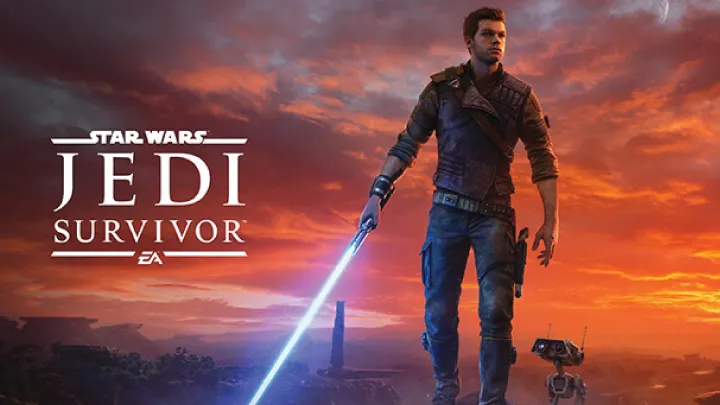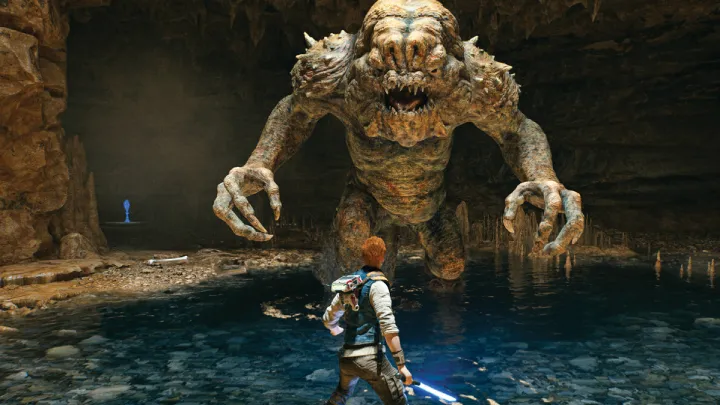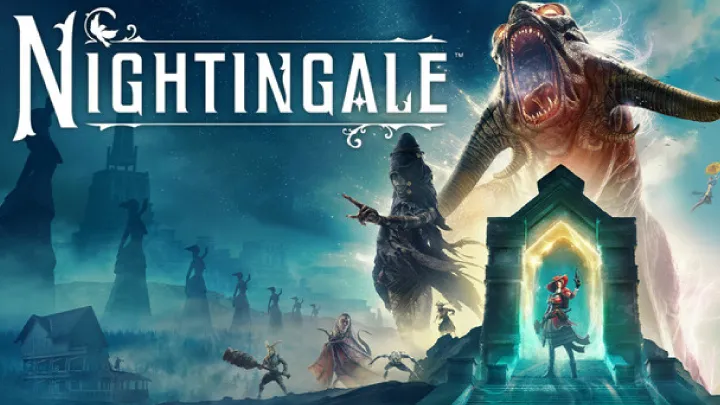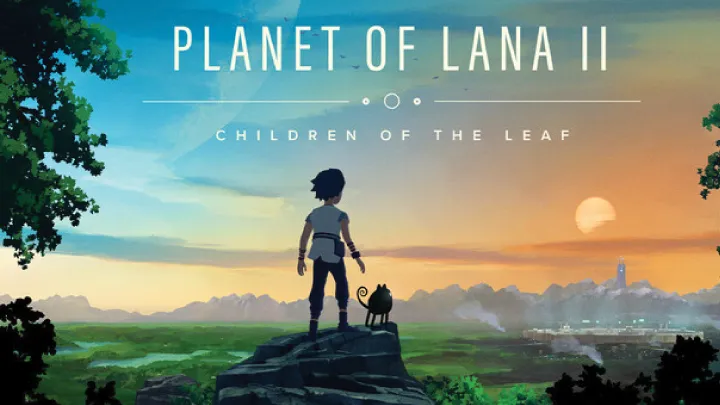
Star Wars Jedi: Survivor, the sequel to Jedi: Fallen Order, has garnered significant attention for its deeply immersive storytelling, engaging combat mechanics, and rich world-building. However, amidst these praised features lies a specific issue often overlooked: the complexity of character development within the game. This article delves into the intricacies of character arcs, the impact of choices on narrative depth, and the overall implications for players' experiences.
The Importance of Character Development
Character development is crucial in any narrative-driven video game, and Star Wars Jedi: Survivor is no exception. Characters are not just vessels for gameplay mechanics; they embody player choices and emotional journeys. This segment explores how development manifests in the main protagonist, Cal Kestis, and his companions, offering players a more personalized narrative experience.
Cal Kestis: A Jedi Under Pressure
Cal Kestis, the central character, grapples with his identity as a Jedi in a galaxy ravaged by the Empire. The pressures he faces are pivotal in shaping his growth.
- Struggles with Trauma
- Cal's traumatic past, marked by loss and survival, significantly impacts his psychological state. Players witness his attempts to reconcile his traumatic experiences with his responsibilities as a Jedi. He embodies the classic hero's journey, yet his struggles make him relatable.
- Evolution Through Choices
- Throughout the game, players make choices that influence Cal's journey. Each decision—from how he interacts with allies to his approach in battle—affects his development, showcasing a character whose growth is tied to player actions.
The Role of Companions
The companions that accompany Cal, such as Cere Junda and Greez Dritus, add layers to the narrative. Each character has distinct motivations, histories, and arcs, which intertwine with Cal's journey.
Cere Junda: Redemption and Growth
Cere represents a character seeking redemption after her fall from grace.
- Struggles with the Past
- Cere's past as a Jedi who turned away from the Order provides depth. Her journey with Cal illustrates the complexities of redemption and the importance of mentorship in shaping a young Jedi’s understanding of the Force.
- Mentorship Dynamics
- As a mentor, Cere guides Cal, but her influence is not one-sided. Her evolving relationship with him highlights the mutual growth that occurs in healthy mentor-mentee dynamics.
Greez Dritus: Comic Relief with Depth
Greez, while often providing comic relief, also represents a unique perspective on survival under oppressive regimes.
- Survival Instincts
- His backstory and motivations reflect the broader themes of survival in the face of adversity. Greez’s character arc reinforces the notion that every creature has a story, offering a unique lens through which players can view the galaxy’s struggles.
- Developing Friendships
- The camaraderie that develops between Cal and Greez adds depth to the narrative, illustrating how friendships can flourish in dire situations.
Player Choices and Their Impact on Character Arcs
A significant aspect of character development in Star Wars Jedi: Survivor is the role of player choice. Players are granted agency in shaping their narrative, which leads to various consequences on character arcs.
Choice-Driven Narrative Design
The game’s design emphasizes player choices that mirror the consequences of real-life decisions.
- Building Relationships
- Players can forge deeper relationships through dialogue options, influencing how characters perceive Cal. Positive choices may result in stronger bonds, leading to unique unlocks and story outcomes.
- Moral Complexity
- Choices are rarely black and white, forcing players to confront moral dilemmas. This complexity adds depth, questioning what it means to be a Jedi in a chaotic world.
Consequences of Actions
The implications of choices extend beyond immediate dialogue and interactions.
- Long-Term Effects on Development
- Characters respond differently based on past player decisions, impacting their development trajectories. A choice made early in the game may influence a major character’s fate later on, reinforcing the weight of player agency.
- Player Engagement
- The more invested players feel in their choices, the more meaningful the character arcs become. This narrative engagement is paramount in fostering emotional connections to the story.
Themes of Legacy and Continuity
Another significant aspect of character development in Star Wars Jedi: Survivor is the exploration of legacy.
Jedi Heritage
The game delves into the responsibilities tied to being a Jedi and the expectations that come with it.
- Carrying the Jedi Legacy
- Characters grapple with their roles as the last remnants of an ancient order. Cal’s struggles reflect the burden of expectation and the desire to forge his path while honoring those who came before him.
The Impact of Family
Family legacies significantly influence character motivations and development.
- Lineage and Expectations
- Characters like Cal carry the weight of their lineage, influencing their actions and decisions throughout the game. This aspect enhances the narrative by tying personal stories to broader themes within the Star Wars universe.
- Forging New Legacies
- Ultimately, the game challenges characters to redefine what it means to be a Jedi, encouraging them to create new legacies that incorporate lessons learned from the past.
Combat and Its Influence on Character Growth
The gameplay mechanics in Star Wars Jedi: Survivor are not just for action; they are intricately connected to character development.
Fluid Combat System
The fluidity of the combat system creates opportunities for players to develop their characters in meaningful ways.
- Skill Mastery and Growth
- As players progress, they unlock skills that reflect not only Cal's growth as a Jedi but also his evolving understanding of the Force. Mastering combat abilities parallels the internal growth experienced throughout the narrative.
Feedback Loops in Gameplay
The game implements a feedback system where player performance enhances character development.
- Personalizing Combat Style
- Players can choose how to approach combat, allowing for a tailored experience that impacts Cal's development. The way players engage in battles feeds directly back into the narrative, showcasing the interconnectedness of gameplay and story.
- Strategic Choices in Combat
- Decisions made in combat scenarios also affect relationships with other characters. For example, how players choose to fight alongside Cere can influence their bond and mutual trust.
Emotional Resonance Through Character Interactions
Character interactions in Star Wars Jedi: Survivor serve to heighten emotional stakes.
Dialogues and Emotional Depth
The dialogues between characters are not merely functional; they add significant emotional weight to the narrative.
- Vulnerable Moments
- Intimate dialogue moments reveal vulnerabilities that deepen characterizations. For instance, confessions of fear or moments of doubt enrich the narrative, allowing players to empathize with characters.
Conflict and Resolution
The conflicts that arise between characters amplify their narratives.
- Character Conflicts
- Tensions between characters can lead to profound moments of character growth and realization. Players witness the natural evolution of relationships through these conflicts, further enhancing emotional engagement.
- Resolutions that Matter
- How conflicts are resolved speaks volumes about character development. A character’s ability to confront their fears or misunderstandings can mark a pivotal point in their narrative arc, often leading to significant shifts in gameplay dynamics.
The Impact of World-Building on Character Development
The richly developed world of Star Wars Jedi: Survivor serves as a backdrop that shapes character experiences.
Immersive Environments
The game’s settings are more than just landscapes; they reflect the story’s emotional depth.
- Symbolic Locations
- Key locations symbolize the characters’ inner conflicts and growth. For instance, visiting a Jedi temple can evoke feelings of nostalgia for Cal, pushing him to confront his past.
Cultural Contexts
The diverse cultures within the game world also influence character interactions and perceptions.
- Encountering Different Species
- Interactions with various species showcase diverse perspectives on the Jedi and the Empire's struggle, enhancing the narrative's complexity. Each encounter enriches character development by challenging preconceived notions.
- Lessons from Other Characters
- Cal learns from the diverse backgrounds of other characters, illustrating how different experiences can forge unique paths in life, further enriching his growth as a Jedi.
Conclusion: The Journey of Growth
In conclusion, Star Wars Jedi: Survivor presents a compelling exploration of character development through its intricately woven narratives, player choices, and immersive world-building. Characters like Cal Kestis, Cere Junda, and Greez Dritus offer unique perspectives that resonate with players, reflecting the complexities of growth, redemption, and legacy within a galaxy fraught with conflict. As players navigate this rich universe, they not only engage in combat but also participate in a profound journey of emotional connection and personal growth. The impact of character development in this game transcends traditional storytelling, establishing a new standard for narrative depth in video games.

















